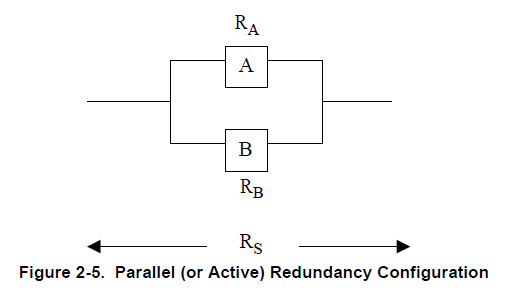Parallel (or Active) Redundancy Group
The simplest case of a parallel redundant group is when it comprises two items, both of which can perform the specified function individually and independently as shown in Figure 2-5.

Assuming that item failures are independent (i.e., failure in any one does not affect the behaviour of the other), then there are four possible system states as follows:
• Both A and B functioning → System functioning.
• A failed, B functioning → System functioning.
• A functioning, B failed → System functioning.
• Both A and B failed → System failed.
Because there is only one failure state, it is simpler to evaluate RS on the basis of the probability of system failure ( FS). is then given by 1–FS. Then:

Using equation (2.1):

The system MTTF corresponding to equation (2.10) is given by:  However, the system failure rate, λS(t), is not equal to  . The quantity λS is in fact givem by: . The quantity λS is in fact givem by: |
It is thus not independent of time.